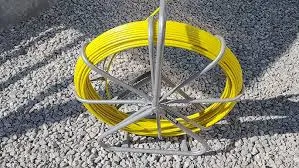
-
 Afrikaans
Afrikaans -
 Albanian
Albanian -
 Amharic
Amharic -
 Arabic
Arabic -
 Armenian
Armenian -
 Azerbaijani
Azerbaijani -
 Basque
Basque -
 Belarusian
Belarusian -
 Bengali
Bengali -
 Bosnian
Bosnian -
 Bulgarian
Bulgarian -
 Catalan
Catalan -
 Cebuano
Cebuano -
 Corsican
Corsican -
 Croatian
Croatian -
 Czech
Czech -
 Danish
Danish -
 Dutch
Dutch -
 English
English -
 Esperanto
Esperanto -
 Estonian
Estonian -
 Finnish
Finnish -
 French
French -
 Frisian
Frisian -
 Galician
Galician -
 Georgian
Georgian -
 German
German -
 Greek
Greek -
 Gujarati
Gujarati -
 Haitian Creole
Haitian Creole -
 hausa
hausa -
 hawaiian
hawaiian -
 Hebrew
Hebrew -
 Hindi
Hindi -
 Miao
Miao -
 Hungarian
Hungarian -
 Icelandic
Icelandic -
 igbo
igbo -
 Indonesian
Indonesian -
 irish
irish -
 Italian
Italian -
 Japanese
Japanese -
 Javanese
Javanese -
 Kannada
Kannada -
 kazakh
kazakh -
 Khmer
Khmer -
 Rwandese
Rwandese -
 Korean
Korean -
 Kurdish
Kurdish -
 Kyrgyz
Kyrgyz -
 Lao
Lao -
 Latin
Latin -
 Latvian
Latvian -
 Lithuanian
Lithuanian -
 Luxembourgish
Luxembourgish -
 Macedonian
Macedonian -
 Malgashi
Malgashi -
 Malay
Malay -
 Malayalam
Malayalam -
 Maltese
Maltese -
 Maori
Maori -
 Marathi
Marathi -
 Mongolian
Mongolian -
 Myanmar
Myanmar -
 Nepali
Nepali -
 Norwegian
Norwegian -
 Norwegian
Norwegian -
 Occitan
Occitan -
 Pashto
Pashto -
 Persian
Persian -
 Polish
Polish -
 Portuguese
Portuguese -
 Punjabi
Punjabi -
 Romanian
Romanian -
 Russian
Russian -
 Samoan
Samoan -
 Scottish Gaelic
Scottish Gaelic -
 Serbian
Serbian -
 Sesotho
Sesotho -
 Shona
Shona -
 Sindhi
Sindhi -
 Sinhala
Sinhala -
 Slovak
Slovak -
 Slovenian
Slovenian -
 Somali
Somali -
 Spanish
Spanish -
 Sundanese
Sundanese -
 Swahili
Swahili -
 Swedish
Swedish -
 Tagalog
Tagalog -
 Tajik
Tajik -
 Tamil
Tamil -
 Tatar
Tatar -
 Telugu
Telugu -
 Thai
Thai -
 Turkish
Turkish -
 Turkmen
Turkmen -
 Ukrainian
Ukrainian -
 Urdu
Urdu -
 Uighur
Uighur -
 Uzbek
Uzbek -
 Vietnamese
Vietnamese -
 Welsh
Welsh -
 Bantu
Bantu -
 Yiddish
Yiddish -
 Yoruba
Yoruba -
 Zulu
Zulu


TEL:
0086-311-88862036
ມ.ຖ. . 07, 2025 01:45 Back to list
ev charging point earth rod
Electric vehicles (EVs) have surged in popularity, as both consumers and governments worldwide embrace greener transportation solutions. One crucial component of EV charging infrastructure is the earth rod used in charging points. Many overlook this element, yet its role is pivotal in ensuring both safety and efficiency within the EV charging ecosystem.
Trustworthiness in EV charging infrastructure is anchored in compliance with industry standards and local regulations. In many regions, regulations stipulate specific requirements for earth rods, driving installation practices. Compliance is non-negotiable, impacting not only the safety but also the credibility of the service provider. Indeed, the authoritative voices in EV infrastructure advocate for meticulous attention to the quality of components and adherence to best practices during installation. Choosing accredited professionals with a track record of successful installations mitigates risk and fosters trust among users. These experts bring years of hands-on experience, comprehensive knowledge of the regulatory landscape, and a commitment to safety and performance. With the global shift towards electrification, advancements in earth rod technology are likely. Innovations may emerge, such as integrated monitoring systems that provide real-time diagnostics, alerting operators to potential grounding issues. As the industry evolves, those at the forefront will be those who adapt, leveraging new technologies to enhance reliability and efficiency. Ultimately, the unsung hero—that is the earth rod—plays a crucial role in the safety matrix of EV charging infrastructure. Through a combination of expertise, experience, and adherence to standards, these grounding solutions uphold the trust and authority customers and stakeholders place in the burgeoning world of electric mobility. As electric vehicles continue their mainstream ascent, ensuring the robustness of every component, including the humble earth rod, will remain a cornerstone of reliable and safe charging infrastructure.


Trustworthiness in EV charging infrastructure is anchored in compliance with industry standards and local regulations. In many regions, regulations stipulate specific requirements for earth rods, driving installation practices. Compliance is non-negotiable, impacting not only the safety but also the credibility of the service provider. Indeed, the authoritative voices in EV infrastructure advocate for meticulous attention to the quality of components and adherence to best practices during installation. Choosing accredited professionals with a track record of successful installations mitigates risk and fosters trust among users. These experts bring years of hands-on experience, comprehensive knowledge of the regulatory landscape, and a commitment to safety and performance. With the global shift towards electrification, advancements in earth rod technology are likely. Innovations may emerge, such as integrated monitoring systems that provide real-time diagnostics, alerting operators to potential grounding issues. As the industry evolves, those at the forefront will be those who adapt, leveraging new technologies to enhance reliability and efficiency. Ultimately, the unsung hero—that is the earth rod—plays a crucial role in the safety matrix of EV charging infrastructure. Through a combination of expertise, experience, and adherence to standards, these grounding solutions uphold the trust and authority customers and stakeholders place in the burgeoning world of electric mobility. As electric vehicles continue their mainstream ascent, ensuring the robustness of every component, including the humble earth rod, will remain a cornerstone of reliable and safe charging infrastructure.
Latest news
Your Best Choice for Duct Rodder and Fish Tape Wire Puller Tools
NewsAug.13,2025
Unlocking Efficiency and Precision with Premium Cable Tools and Equipment
NewsAug.13,2025
Smart Solutions with Precision: Cable Pulling Tools That Deliver
NewsAug.13,2025
Reliable Protection with Advanced Hot Stick Technology
NewsAug.13,2025
Reliable Cable Installation Tools at Your Fingertips
NewsAug.13,2025
Optimized Cable Laying with Heavy-Duty Solutions for Modern Projects
NewsAug.13,2025
Copyright © 2025 Shijiazhuang Bilo Import and Export Trading Co., Ltd. All Rights Reserved. Sitemap | Privacy Policy

BlLo lmport & Éxport is specialized in power and cable equipment andconsiruction tools,Qur main producis are FRP
duct rodder, cable rollerscable pulling winch, cable drum jack, cable pulling sock, etc.
Copyright © 2025 Shijiazhuang Bilo Import and Export Trading Co., Ltd. All Rights Reserved. Sitemap | Privacy Policy










